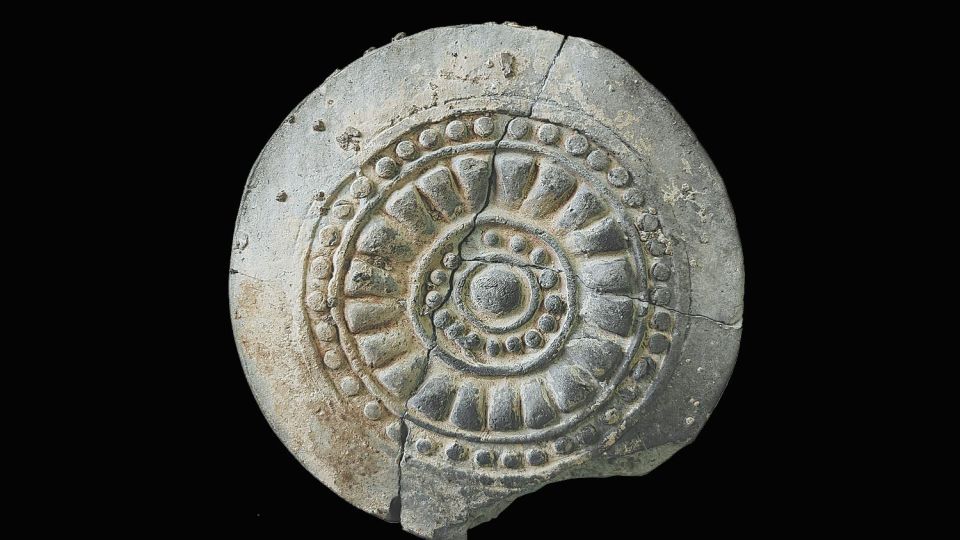July 1, 2022
BEIJING – A land of beliefs, opulence and great expectations, Xiyu (western regions) has charmed rulers, merchants, poets and pilgrims alike throughout ancient history.
Mainly referring to the present-day Xinjiang Uygur autonomous region and parts of Central Asia, Xiyu was a string of oasis cities that dotted the Silk Road like pearls, stretching westward along the Tianshan Mountains. Bathed in multiculturalism and prosperity, they tell a millennia-long saga, the splendor and relevance of which have survived the sands of time.
These ancient cities may have fallen into ruins, but thanks to the diligence of archaeologists and descriptions in documentation, they have become concrete and stunning evidence that marks the peak of the Eurasian trade route network.
Since 2016, Guo Wu, a researcher with the Institute of Archaeology, Chinese Academy of Social Sciences, has focused on the Beiting ruins, or Beshbaliq, the largest and best-preserved ancient city by the northern slopes of the Tianshan Mountains. Located in today’s Jimsar county in Xinjiang, the ruins have a core area of over 1.5 square kilometers.
In 2014, the Beiting ruins gained UNESCO World Heritage status by virtue of being part of “Silk Roads: the Routes Network of Chang’an-Tianshan Corridor”.
“The city thrived on an artery of the Silk Road’s northern arm,” Guo says. “Smooth trade in Xiyu depended on this place.”

The Gaochang city ruins in today’s Turpan, Xinjiang. [Photo provided to China Daily]
“The city was constructed uninterruptedly for 150 years under the Tang Dynasty. Small-scale adjustments in layout happened in the periods that followed. The city played a pivotal role until the Yuan Dynasty (1271-1368),” Guo says.
In 702, Tang empress Wu Zetian ordered the setting up of the Beiting Protectorate there to govern the north of Tianshan. In the following centuries, it saw many dynasts come and go. Nonetheless, from Tubo and Qocho regimes to Khitans and Mongols, ambitions to uphold cultural exchange and ensure good business along the Silk Road were shared.
For instance, although Buddhism was widely in practice under the Qocho regime, Guo’s team unearthed a Christian relic-the cross-near the ruins of a Buddhist temple.
“The urban system centering the Beiting ruins demonstrates inclusiveness, mutual learning and cooperation. They help us understand how a shared community of a Chinese nation was formed,” Guo says.

The Gaochang city ruins in today’s Turpan, Xinjiang. [Photo provided to CHina Daily]
In the first century BC, following the orders of a Western Han Dynasty (206 BC-AD 24) emperor, tens of thousands of soldiers left their homes in present-day Gansu province and moved further west to settle down in today’s Turpan by the southern slopes of Tianshan. They defended the frontier area and turned farmers in their spare time.
This settlement of soldiers grew to become a key point on the Silk Road and witnessed communication among various ethnic groups for almost 1,500 years. It is referred to as the Gaochang (Qocho) city ruins today.
Chen Aifeng, deputy director of Academia Turfanica, a Turpan-based research institute focusing on regional heritage, sees the city as a rare demonstration of glory of the Tang Dynasty, the pinnacle of Chinese imperial years, and its great ambition to connect with the rest of the world.
Mimicking the layout of Chang’an (present-day Xi’an, Shaanxi province), the capital of Tang, Gaochang’s walls, gates, temples and even marketplaces can easily help one reminisce about the golden days.
“The ancient Silk Road was not really one ‘express route’ via which people covered thousands of kilometers at one go, like taking a long-haul direct flight from China to Europe,” Chen says.
“Merchants traveled for relatively short distances every time to do business. Gaochang thus became an intersection where silk, spices and other products from Central China and West Asia were traded, and where people also exchanged ideas,” Chen explains.
Gaochang had both company and competition. The well-preserved Jiaohe (Yarkhoto) city ruins were found just 50 kilometers away. The facade may be eroded, but it does not conceal Jiaohe’s magnificent past.
As a fortress atop a steep cliff, the city was built by digging the ground rather than being built up. It is among the world’s oldest and largest cities structured in this fashion.
Like Beiting, the Gaochang and Jiaohe ruins also have been included in the World Heritage Site list as segments of the Chang’an-Tianshan Corridor. In Chen’s eyes, the pair is of incomparable significance because they mirror the lasting devotion of the central Chinese dynasties to securing stability and prosperity of Xiyu.
In 640, the Protectorate General to Pacify the West-the highest administrative body governing Xiyu-was set up by the Tang Dynasty in Jiaohe, but Chen says that centuries before this milestone event, regional regimes controlling Turpan were deeply influenced by Central China.
For example, during the Sixteen Kingdoms (304-439) period, Confucianism, Taoism and Buddhism found a way to coexist in harmony amid conflicts and chaos. Political and social systems of central Chinese dynasties were also introduced there. “The sites are thus solid historical evidence of our country’s rule in the region,” adds Chen.


